
views
Getting Started

Get an open litter box instead of a closed one. A closed litter box may look nicer and be better at keeping the smells in, but an outdoor cat may not like it. Outdoor cats are used to the open, and a covered box may make them feel closed-in.
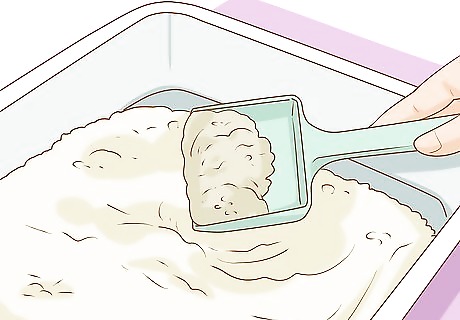
Make sure that the box is big enough. The box needs to be large enough for the cat to be able to move around in. Look for something that is the same length as your cat, plus another half. If you can't find a box that is large enough, use a plastic bin instead. Make sure to cut a hole in the side so the cat can go in and out. Be sure to leave the lid off.

Experiment with litter types. Different cats prefer different types of litter. Most outdoor cats are used to soil, so it might be a good idea to use something that is similar in texture. Start with something that is fine, sand-like, and unscented. Over the next few weeks, mix in a little bit of litter. After a few weeks, you will be using just litter. Keep an eye on your cat whenever you add more litter to the soil. If your cat refuses to use the litter box, he or she might not be ready for the change. Add in a little bit more soil. If you don't know what sort of litter to use, consider buying a few different types and placing each one in a separate box. Choose the one that the cat uses. Consider using a natural litter, such as wood bark pellet, ground corn, or walnut shell pellet. These may appeal more to an outdoor cat. You can also sprinkle a little bit of cat attract litter on top of your regular litter. This might get your cat to use the litter box.
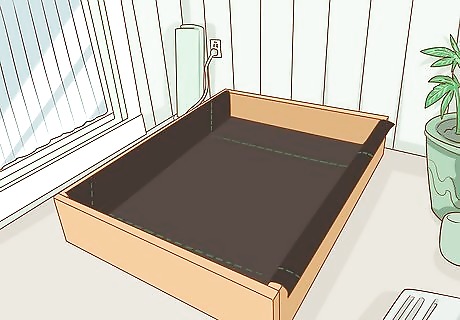
Make sure you have enough litter boxes. You need to have at least one litter box, but you may consider getting an extra one while your cat is learning to use it. If you have more than one cat, you will need one litter box per cat. Another rule of thumb is having 1 litter box per cat plus 1 extra.

Put the box in the right place. The best places are quiet, such as a bathroom or laundry room. If you place the box in a busy, noisy area, the cat may feel stressed or anxious, and go to the bathroom elsewhere. If you notice that the cat has been going to the bathroom in a certain area, try to place the litter box there. Never place the litter box in the same room as the cat's food and water. Cats are clean animals and may refuse to eat if their food is too close to their bathroom area. Avoid placing the litter box near "scary" areas. If a cat has to pass a dog's kennel or a noisy washing machine in order to get to the litter box, he or she may find some other place to go. Consider placing the box near the door. That way, if your cat tries to go outside to go to the bathroom, he or she will see the litter box and may try to use it instead. If your cat has trouble getting to the litter box, he won't want to use it.
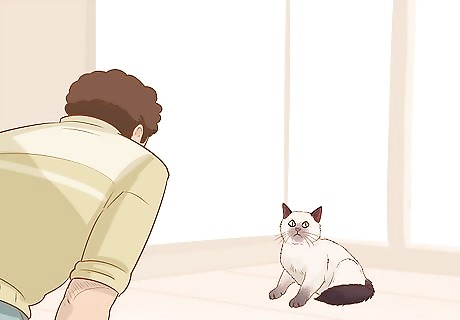
Know how to accommodate kittens. If you cannot find a small enough litter box or plastic bin, you may use several sheets of newspaper instead. Keep the newspaper in the same spot and throw away the paper right after it gets dirty. If the kitten starts to go to the bathroom elsewhere, pick the kitten up and move him or her to the newspaper.
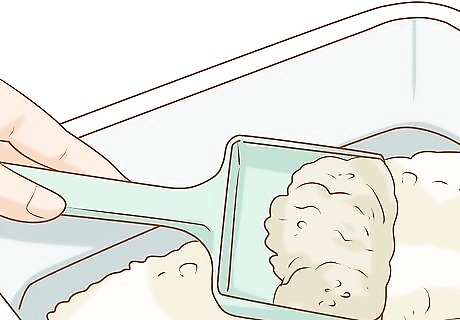
Make sure you clean the litter box at least every other day. Cats won't use a dirty litter box, so you want to make things as appealing as possible. Use a litter scooper to lift the feces and clumped urine out of the litter.

Be sure to change the litter once a month. Simply scooping out the poop and urine is not enough. Over time, the litter itself will absorb odors and become stinky. This won't be appealing to your cat, and they may find another place to go to the bathroom. To prevent this from happening, you will need to toss the old litter out once a month, clean it with an unscented detergent and fill the box up with fresh litter.
Training and Rewarding the Cat

Show the box to your cat and let your cat smell it. Some cats will understand that this is their new bathroom, while others will need more help. Try lifting your cat up and gently setting them down onto the litter. If your cat jumps out, do not force them back into it. They may need more time to get used to the texture. You can also place catnip along the opposite of the litter box rim. This way, your cat has to step into the box to smell it.

Give your cat a reward when they use the box. If you see your cat using the box, wait until they are done before giving them a reward. Praise the cat, and pet them where they like to be petted. Be sure to give your cat a treat as well.
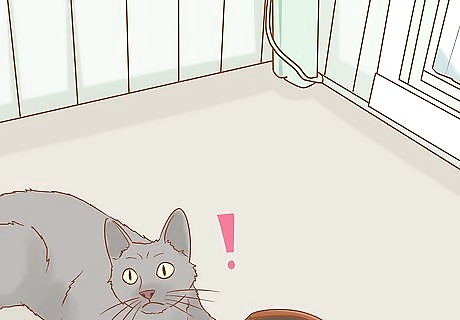
Know what to do if your cat doesn't use the box. If you see your cat going to the bathroom elsewhere, but still close to the box, pick your cat up and carry them to the box. If the cat is too far away, wait until the cat is done, then move the poop into the box. Let your cat see the poop in the box. If your cat went pee, see if you can cut the pee out of the item and move the scrap to the box. If the cat went pee on the carpet or on something that cannot be cut, clean the area immediately using an enzyme cleaner. This will break down the cat urine. Do not use an ammonia-based product to clean cat urine. Ammonia smells similar to urine to a cat's nose. If you use that to clean, your cat may return to the same spot the next time they need to go.

Never punish your cat. If you punish your cat, they may become afraid of you. If you try to force them into the litter box, the cat may also grow afraid of the box and try to avoid it.

Consider using a litter attractant. It's a powder that looks a little bit like dried catnip. You add it to the litter box; it helps attract cats to it. You can find litter attractant in the litter or medical section of a pet store.
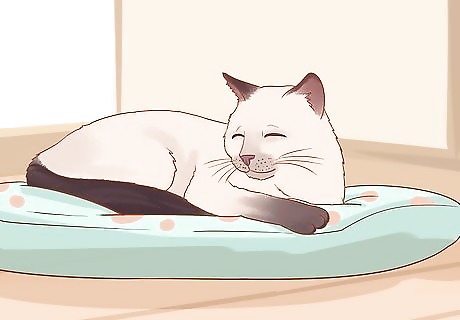
Be aware that this can take some time. Some cats will start using the litter box almost right away, but others will need more time to figure what it is for and how to use it. This can take a few days to a few weeks.
Knowing What to Do When Nothing Works
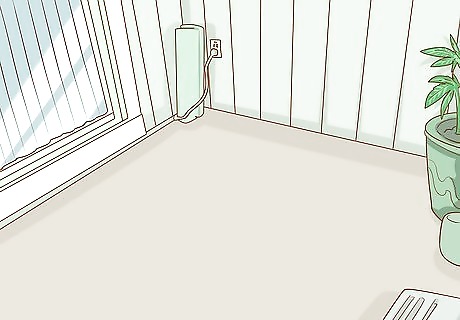
Try moving the box to the place where the cat is eliminating. If the cat is avoiding the litter box, they may have a reason. Maybe the area is too noisy, too dark/bright, or too drafty. If your cat keeps going to the bathroom in the same spot, try moving the litter box to that spot. Make sure that you are cleaning up the places where the cat eliminates. Any trace smell of feces or urine will tell the cat that this is a bathroom spot, making them more likely to return to it.

Consider taking the cat to a vet. Sometimes, cats avoid litter boxes for medical reasons. For example, if the cat has a urinary tract infection, they may try to seek out a softer surface to urinate on. Cats are also attracted to their owners and will seek out their smell when sick, hurt, or frightened. If you find that your cat has been going to the bathroom on your bedding or clothes, there could be an underlying health problem. If your cat keeps avoiding the box, examine their urine and feces. A red or pink tint to the urine usually signifies an infection. If the poop is tarry or has black or red streaks in it, your cat could be very sick. You should take your cat to the vet immediately.
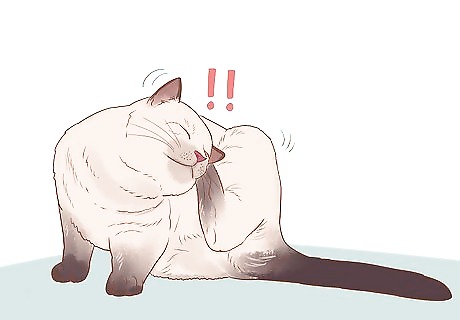
Be sure that your cat isn't just marking his territory. If you have a male cat who is not neutered, he may be spraying your house to mark his territory. Neutered male cats do not typically do this. Ask your vet about getting your male cat fixed; this may help resolve the spraying problem.




















Comments
0 comment